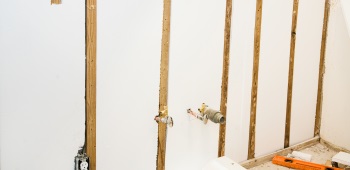When Old Man Winter comes to the Pacific Northwest, he’s more likely to be wearing a raincoat than a parka. That’s one of the joys of living in the Northwest: Sure, it’s gray and rainy all the time, but at least we’re not digging ourselves out of a thick blanket of snow every morning.
But since we do get the occasional long winter’s freeze, it’s helpful to know a little about the physics of frozen pipes and their effect on our plumbing systems. Icy pipes can burst, after all, sending a plume of frigid water into walls and living spaces — and turning our winter into a cold, expensive nightmare.
A funny thing about frozen pipes, though: It’s not necessarily the ice itself that damages them and makes them prone to cracking. Rather, frozen water expands, increasing pressure in the pipe between the blockage and the closed faucet. That means pipes can burst in spots where there actually isn’t any ice!
What else makes a pipe more susceptible to freezing?
- Foundational holes. Cracks and holes in a home’s foundation allow cold air in, making pipes susceptible to freezing. Multiple seasons of exposure often go unseen — until it’s too late.
-

Insulation can keep pipes from freezing during cold snaps.
A lack of insulation. Pipes not wrapped in electrical heating tape or covered in foam insulation are more likely to freeze. This is especially true when pipes are made out of copper or older galvanized steel. Pipes located on a structure’s exterior need special attention.
- Leaky pipes. A leak indicates a crack. If you see puddles around your plumbing, that means your pipes have sprung a leak. When temperatures dip way below freezing, pipes can expand, and these cracks become fault lines ready to burst and ruin your day.
- Temps. Temperatures outside usually have to be about 20 degrees below freezing to cause the water in your plumbing to freeze. That’s because the cold doesn’t easily penetrate to the inner walls of a home, especially if it’s properly heated and insulated.
- Location, location, location! Pipes in the attic or basement, in the exterior walls of your home, or in unheated garages are more likely to freeze.
When it comes to protecting our homes and our pipes, the old saying applies: An ounce of prevention is worth a pound of cure. Have questions about your plumbing? Contact Meticulous Plumbing today.


